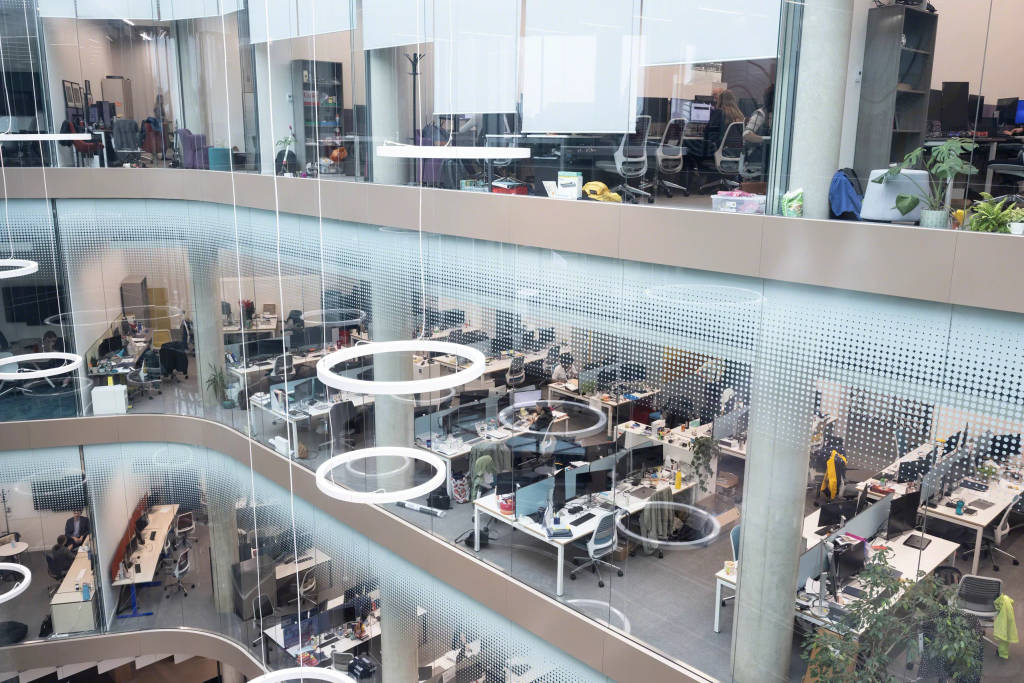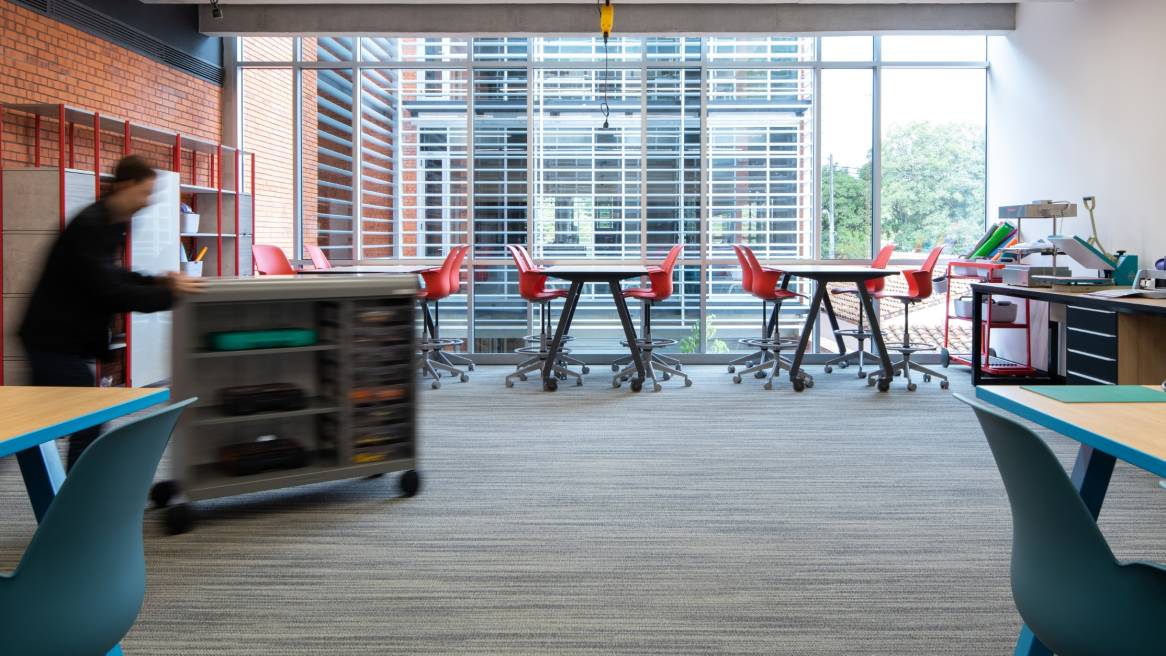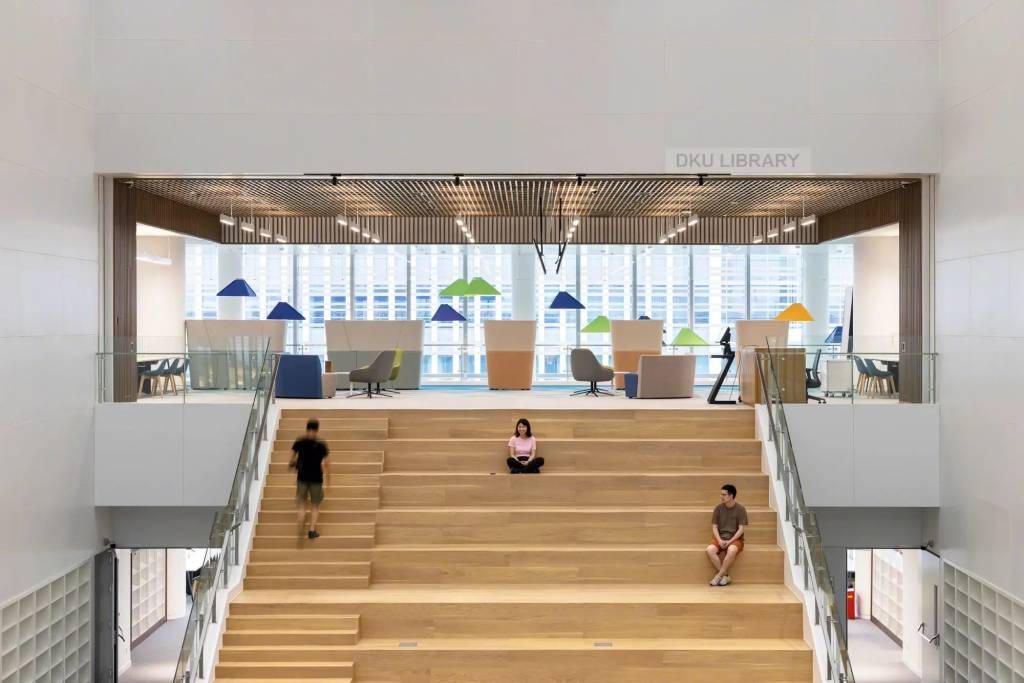Lessons in Learning from Around the World
Spaces intentionally designed to engage minds, create connection, foster greater wellbeing and activate the environment can create the conditions for students to thrive within – and beyond – the classroom. Educators and learners all around the world are experiencing the benefits.
Colegio Japonés Paraguayo
When you first walk into Colegio Japonés Paraguayo in Asunción, Paraguay, one of the first things you’ll notice is something not always found in many schools around the world – throngs of students excitedly greeting guests on their own.
“A lot of people are wowed by that,” says Patricia Toyotoshi, the director of Colegio Japonés Paraguayo. “It speaks to the discipline and respect we instill in our students.”
Colegio Japonés Paraguayo was originally established by Toyotoshi’s father to provide a quality education to the local Japanese population in Paraguay but now mostly serves native Paraguayan families. It’s not just an immersion in Japanese culture – visitors will also find students designing and making with 3D printers, or in an adjacent space, children creating simpler, smarter systems in the realm of mechatronics. Down the hall, students engineer robots, and use computing and AI to enhance supply chain systems. In another classroom, children can be seen creating culinary delights or sewing new fashions, while young people work nearby to shoot, edit and create film productions.
When Toyotoshi took over leadership of the school from her relatives several years ago, the curriculum was traditional. She laments the time when teachers instructed from the front of a classroom, where students sat in uniform rows of stationary desks. She believes the school’s true innovative potential wasn’t fully unlocked until the recent construction of its new ‘creative building’ – an expansion to the campus that features areas designed specifically for the wide range of disciplines the school offers.
“The building gave us the last component we needed to really bring out the true talents of our students,” Toyotoshi says. “They are becoming what the world wants for work now – students who can think and produce something by working collaboratively.”
She likes to share the story of how a group of students from Colegio Japonés Paraguayo recently won a national aerospace and astrodynamics competition, crediting the school’s new flexible space for launching them to success. “For me, seeing these kids – how they worked together – this is what we’ve wanted for such a long time. Our mission is to help these students become the future citizens that we want for our country – that’s our vision. We truly believe in the value of an excellent education, and it’s why we’re here. It’s why we’re investing,” Toyotoshi says.
“Learning is about what makes you happy and fulfilled as a person. Everybody has a talent. Everybody has skill. You just have to find it – and you can be somebody with that.”
Patricia ToyotoshiDirector, Colegio Japonés Paraguayo
Duke Kunshan University
Leaders of Duke Kunshan University faced a unique but ‘good-to-have’ problem – as a fledgling institution, they were growing rapidly and needed to expand to keep up with admission.
The liberal arts school, founded only a decade ago as a U.S.-China partnership between Duke University and Wuhan University, offers an array of innovative academic programs for students from around the world. Their challenge was creating a modern, state-of-the-art facility rooted in local culture, yet flexible and accessible enough to promote creativity and drive innovative thinking with a global community.
“Our vision is to be a small university, rooted in the community of Kunshan, but that fosters international encounters between students, faculty and staff. We’re very much part of this community in Kunshan, but extended all over the world,” says Scott MacEachern, PhD, vice chancellor of academic affairs, Duke Kunshan University.
To accommodate its growing student body and staff, the school needed new dorms, classrooms and labs to support a full complement of more than 2,000 undergrads, 1,000 graduate students and hundreds of faculty and staff. To supercharge the potential for learning experiences, a library, social spaces, collaboration spaces and meeting spaces were also added to present a wide-ranging ecosystem of choice and control that accommodates various group sizes, privacy needs and postures.
The entire idea, says MacEachern, is for the environment to be inspiring, flexible, sustainable and inclusive.
“Our spaces allow people to be comfortable, happier and healthier when doing their work. Not just minute by minute, but over long periods of time.”
Scott MacEachern, PhDVice Chancellor of Academic Affairs, Duke Kunshan University
University of Glasgow
Reaching above the ancient edifices of Scotland’s largest city like the fictional ‘Hogwarts’ of Harry Potter fame, the University of Glasgow is one of the most storied centers of learning in the western world. Founded in 1451, the school now attracts 29,000 students from more than 140 countries. While steeped in tradition and hundreds of years of academic excellence, the university is focusing on creating an education center of the future – where innovation now echoes through its historic halls.

Over the last decade, realizing that profound shifts were underway driven by new technologies and rising expectations for more collaborative and active ways of learning, the University of Glasgow has significantly invested in its infrastructure to expand its world-class campus.
As a leader in world-changing research, a keystone to the university’s expansion is the new state-of-the-art Mazumdar-Shaw Advanced Research Centre (ARC). Home to 600 researchers and PhD students, the ARC is described as ‘the new pulse’ of the research community at the University of Glasgow. The building is intentionally designed to encourage interdisciplinary work across research teams and unlock their true potential. This is accomplished through space design that better compliments what the day in the life of a researcher might look like. To understand this, the university worked with Steelcase to host a series of workshops, listening to the needs and expectations of those who would use the building. What resulted was a design that fosters a culture of organic cross-collaboration among teams – encouraging them to work more closely and be less siloed.
The space design itself focuses on the proximity of different needs – a neighborhood of spaces that puts people in close contact with each other. This creates the opportunity for informal interactions, directing researchers’ time and energy toward collaboration. The space makes it easier for people to choose where they want to work depending on their role, and the type of work they’re doing that day.
“Create space where you can think with and meet other scholars and explore the art of the possible – that’s the philosophy behind the building.”
NEIL BOWERING Director of Professional Services



